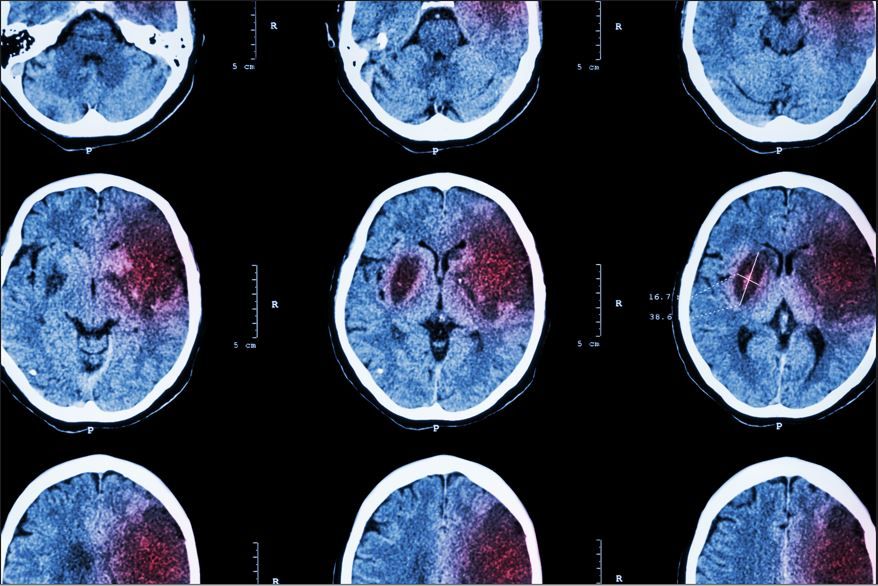Investigators Identify Hemoglobin A1c/HDL-C as a Predictor of Stroke Risk in Older Adults
Elevated HbA1c/HDL-C ratios significantly increased stroke risk, even after adjusting for confounding factors, reported authors of a recent study.
©Stockdevil/AdobeStock

Baseline and cumulative mean hemoglobin A1c (HbA1c) and high-density lipoprotein cholesterol (HDL-C) levels are associated with an increased risk of stroke in middle-aged and older adults, according to a study published in Lipids in Health and Disease.1
The results underscore “the potential of HbA1c/HDL-C as a clinical marker for long-term stroke risk assessment and prevention strategies,” study authors wrote.1
High levels of total cholesterol and low-density lipoprotein cholesterol have been associated with an increased risk of ischemic stroke. On the other hand, HDL-C has been inversely associated with the risk of ischemic stroke, with previous research showing it has a protective effect. Abnormal hemoglobin has been associated with higher risk of all-cause mortality, poor functional outcomes, stroke recurrence, and composite vascular events.2,3
“Stroke is primarily driven by metabolic factors such as hypertension, diabetes mellitus (DM), and dyslipidemia, as well as behavioral factors like smoking and poor dietary nutrient balance, and environmental influences including air pollution and low socioeconomic status,” researchers stated. “Among these, metabolic-related risks—specifically, abnormal glucose and lipid metabolism—contribute to 21.9% and 21.6% to the stroke burden, respectively.”1
In the current study, researchers aimed to evaluate the association between HbA1c and HDL-C with stroke prevalence, hypothesizing that it would be significantly positively associated with stroke prevalence. Further, they wanted to establish the cumulative mean of HbA1c/HDL-C and new stroke incidence.1
Researchers utilized data from the China Health and Retirement Longitudinal Study (CHARLS), including 8502 participants in a cross-sectional analysis and 5165 individuals in a 7-year longitudinal follow-up. Stroke cases were self-reported and confirmed by a physician. The study analyzed both baseline and cumulative mean HbA1c/HDL-C levels in relation to stroke prevalence and new stroke incidence.1
In the cross-sectional analysis, individuals in the highest tertile (T3) of HbA1c/HDL-C had a significantly higher prevalence of stroke compared to those in the lowest tertile (T1) (OR 1.71, 95% CI 1.05–2.77). In the longitudinal analysis, people in the highest tertile of cumulative mean HbA1c/HDL-C had an increased risk of developing stroke (OR 1.54, 95% CI 1.08–2.19) over the follow-up period, according to the results.1
Results also showed that the predictive value of HbA1c/HDL-C was significantly greater compared to HDL-C (net reclassification index [NRI]: 0.379, 95% CI 0.235–0.523;
integrated discrimination improvement [IDI]: 0.005, 95% CI 0.003–0.007; P < .05) and HbA1c (NRI: 0.436, 95% CI 0.294–0.579; IDI: 0.005, 95% CI 0.003–0.007; P < .05). Investigators noted consistent results across most stratified subgroups.1
“Our findings underscore the importance of HbA1c/HDL-C monitoring as part of primary stroke prevention strategies, particularly in non-diabetic individuals,” authors concluded. “Future studies should focus on personalized risk stratification in diabetic individuals, considering factors such as disease duration, treatment regimens, and the presence of complications.”1
References:
- Huang C, You H, Zhang Y, et al. Association between the hemoglobin A1c/High-density lipoprotein cholesterol ratio and stroke incidence: a prospective nationwide cohort study in China. Lipids Health Dis. Published online January 25, 2025. doi:10.1186/s12944-025-02438-4
- Hackam DG, Hegele RA. Cholesterol lowering and prevention of stroke: An overview. Stroke. 2019;50:537-541. doi:10.1161/STROKEAHA.118.023167
- Zhang R, Xu Q, Wang A, et al. Hemoglobin concentration and clinical outcomes after acute ischemic stroke or transient ischemic attack. J Am Heart Assoc. 2021;10:e022547. doi:10.1161/JAHA.121.022547